The document discusses the development of a Smart Fluid Self Adaptive Damper System (SFSADS) designed to improve vehicle speed and acceleration by adapting to varying road conditions using magneto-rheological fluid. It details the limitations of current dampers and presents a solution that enables the suspension system to change stiffness in response to environmental factors, ultimately enhancing vehicle performance. The proposed system is analyzed through simulations, demonstrating its effectiveness in increasing cornering stability and handling during irregular road conditions.
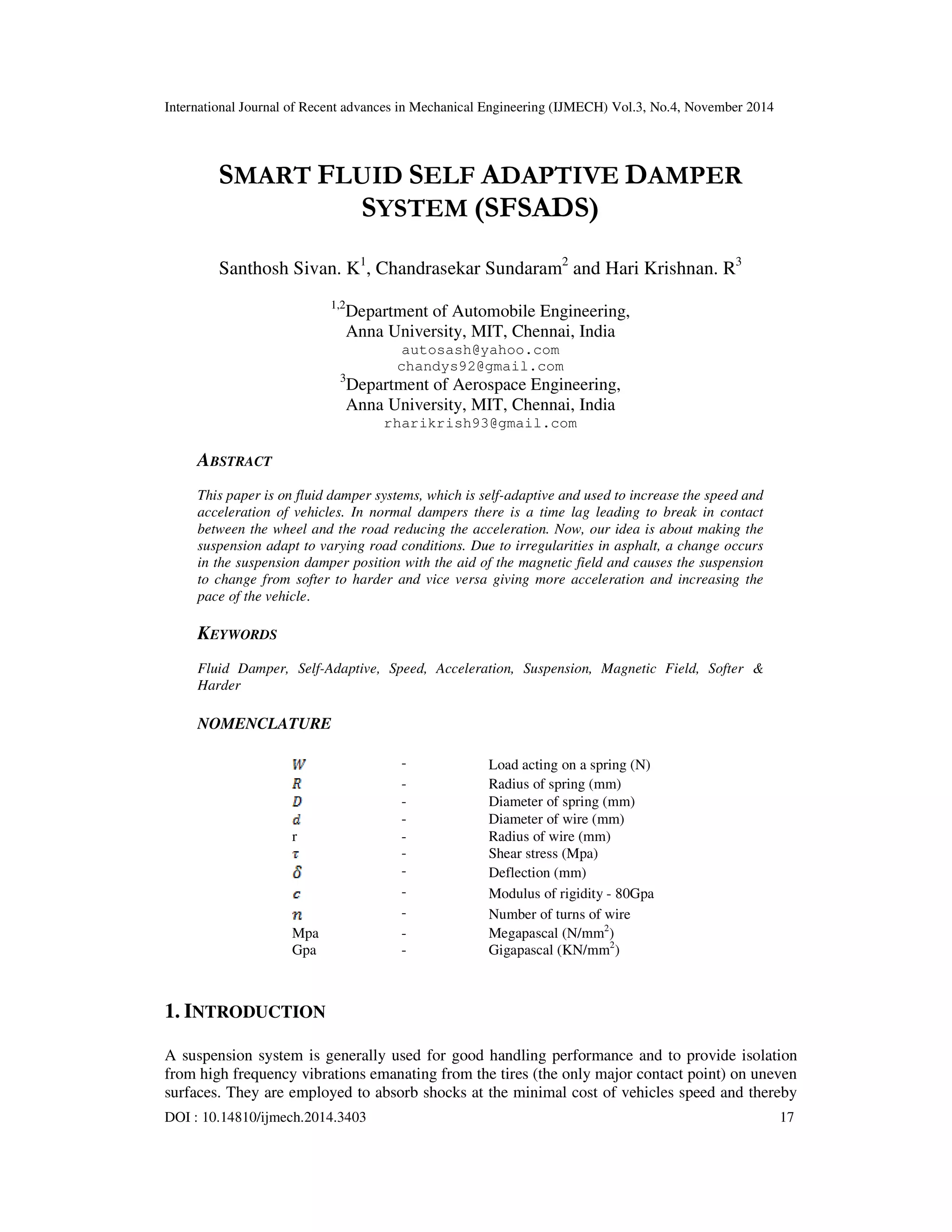
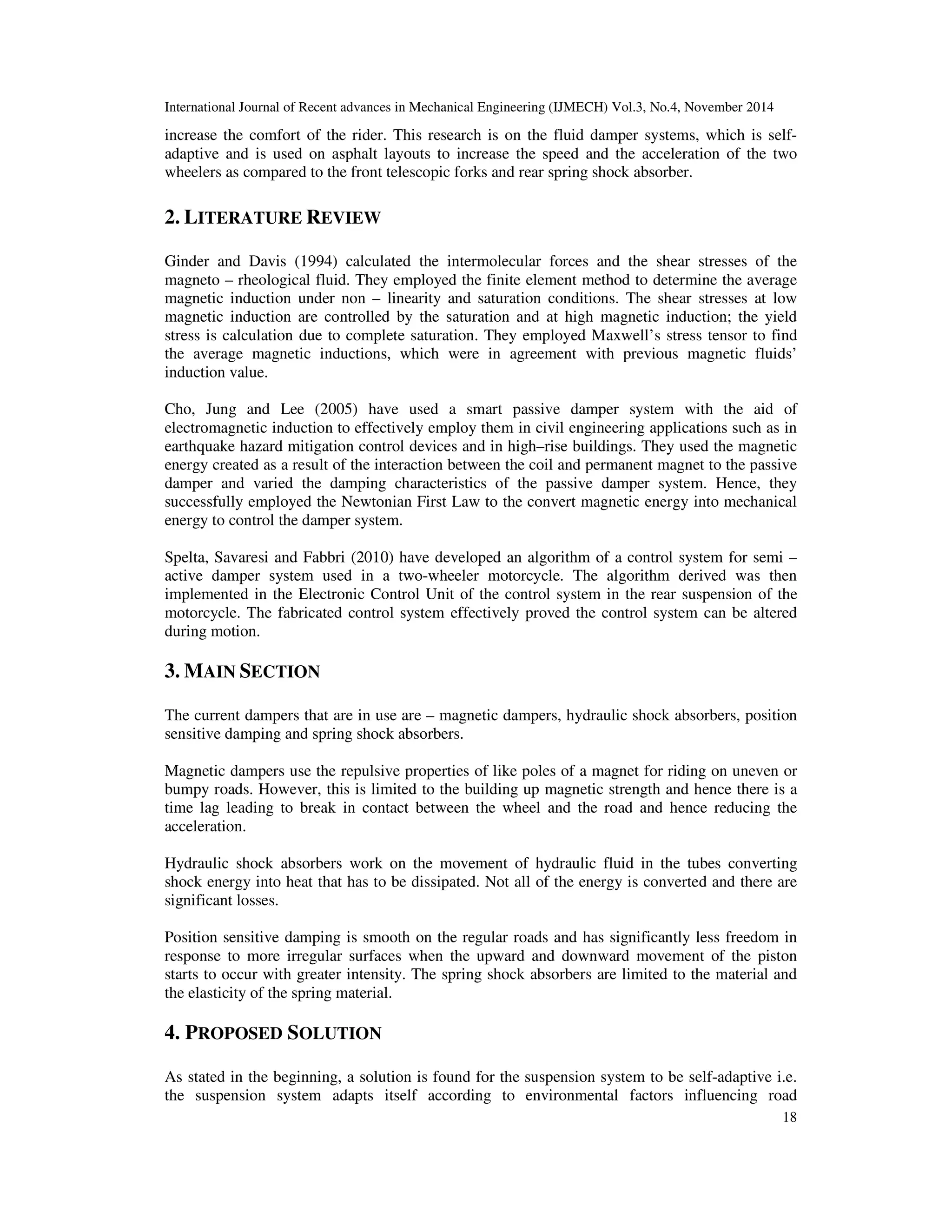
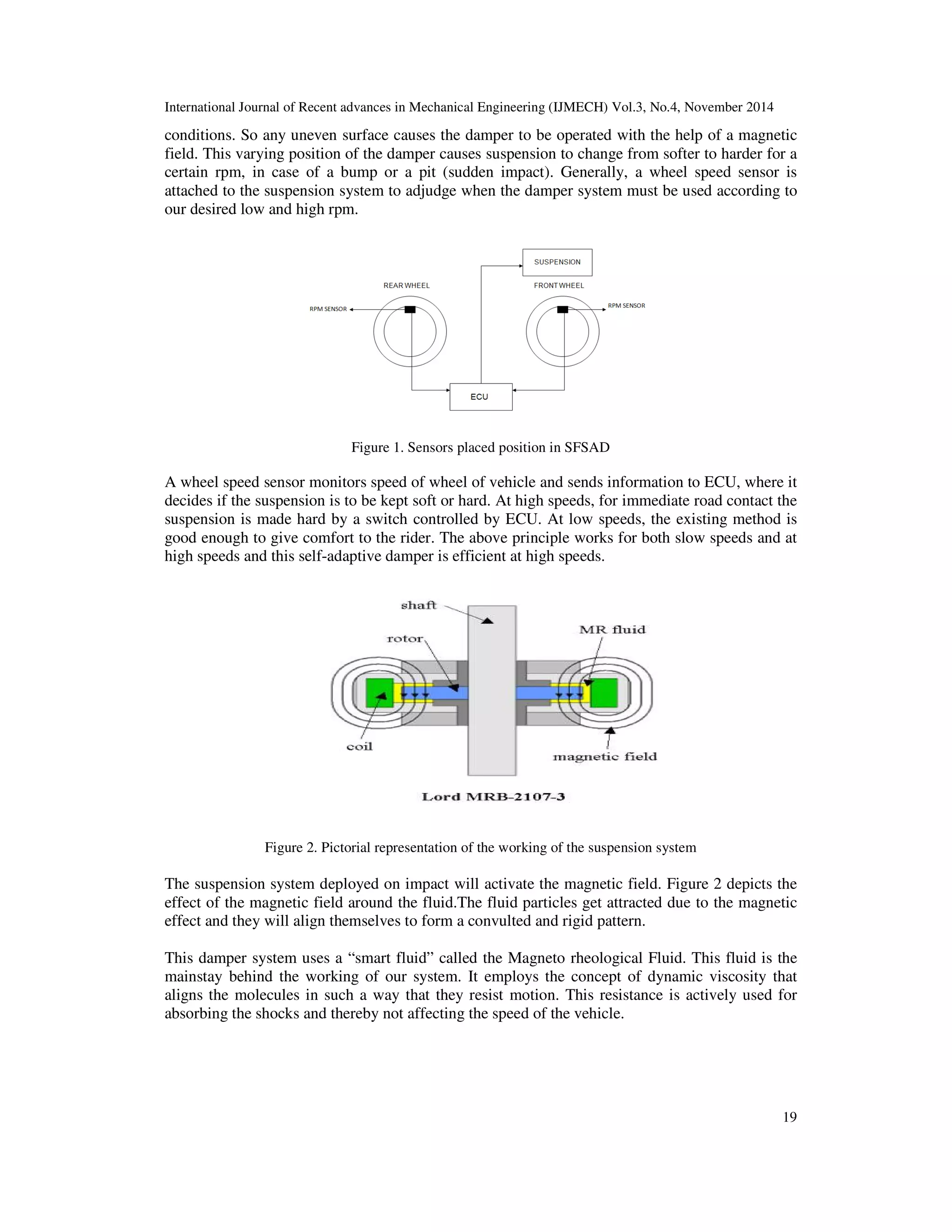

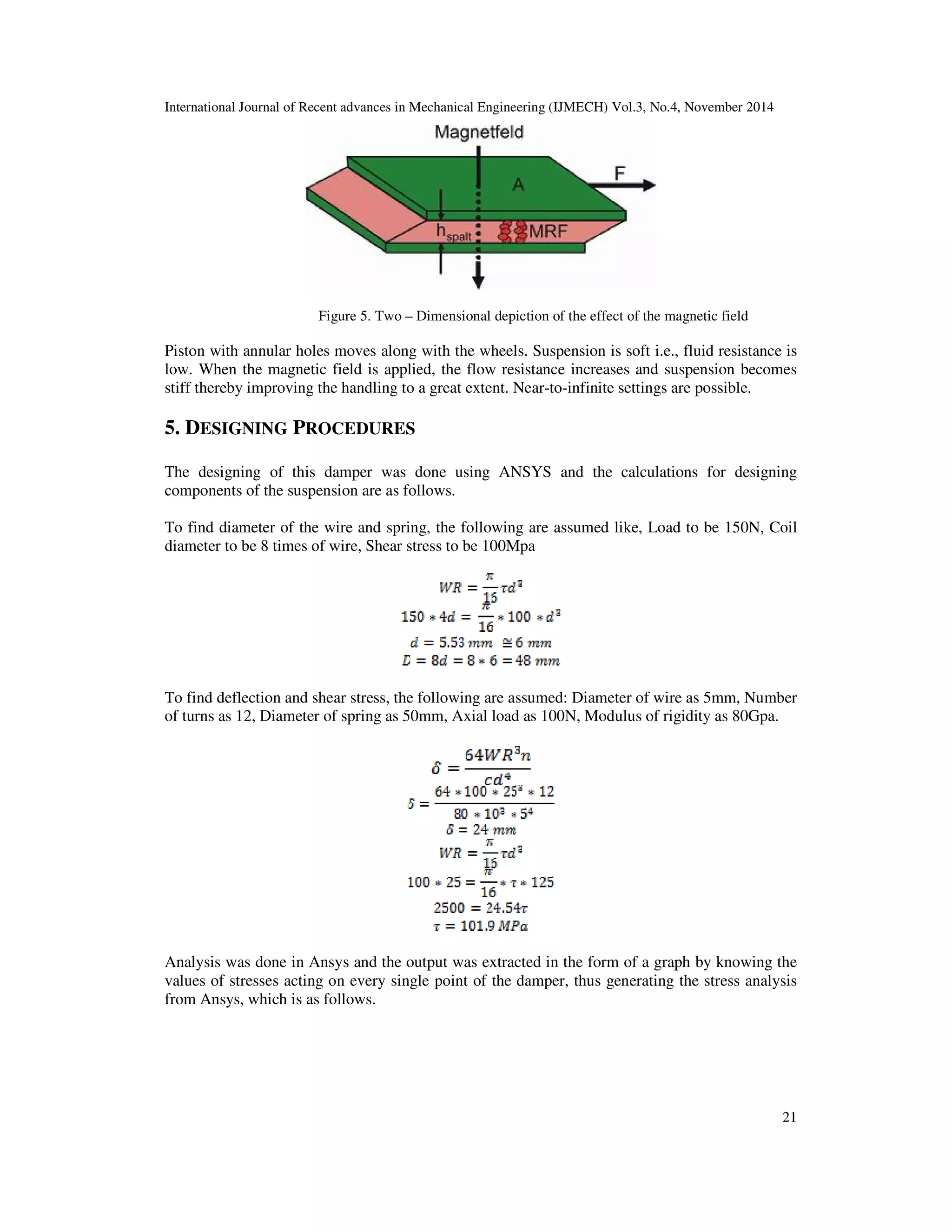
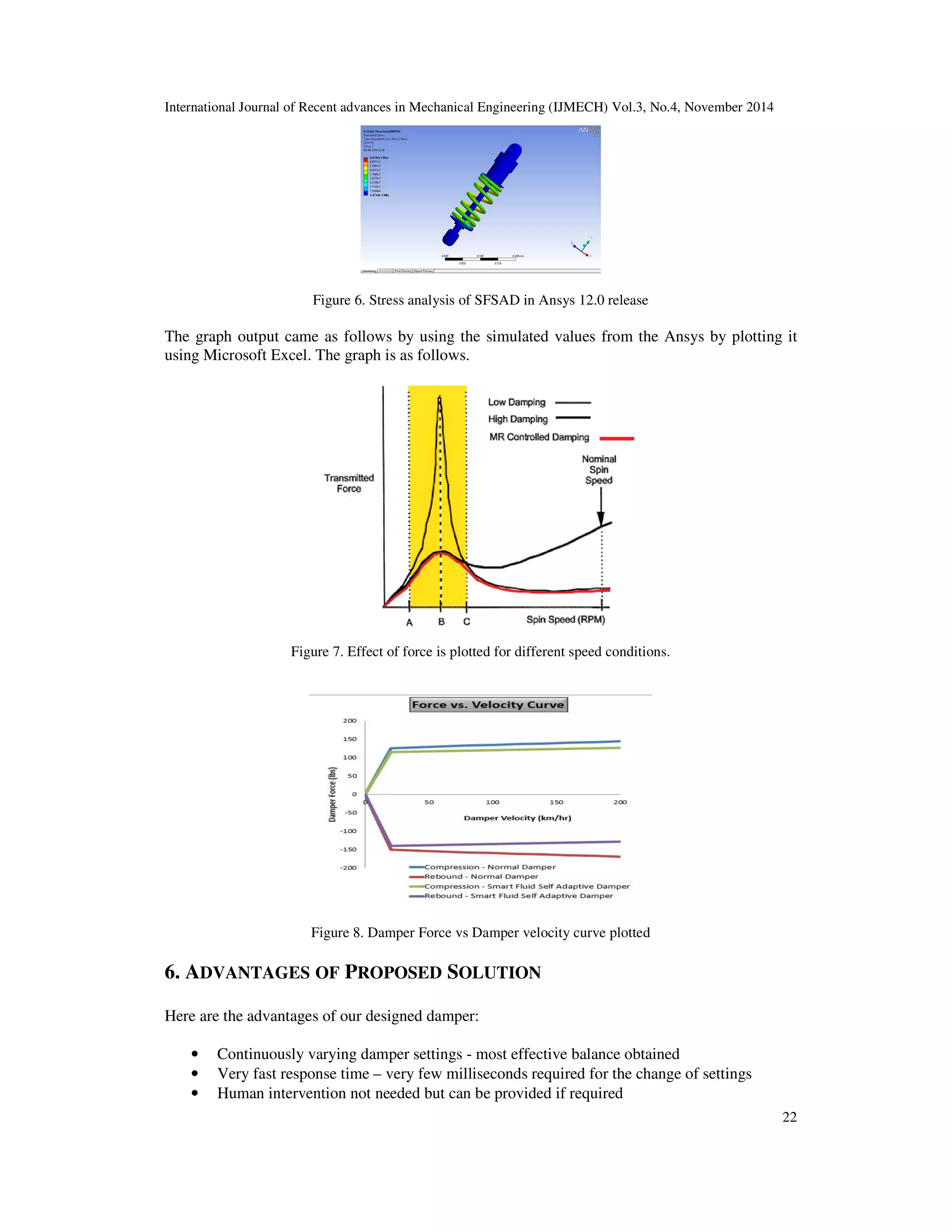
![International Journal of Recent advances in Mechanical Engineering (IJMECH) Vol.3, No.4, November 2014
23
• Eliminates unreliable mechanical components - very high reliability
• Provides the best of both worlds - good riding performance and improved vehicle
dynamics
• Applicable to all types of vehicles
• During the normal asphalt condition, it leads to more comfort and when in abnormal
asphalt, this fluid increases the pace of the cars or motorcycles having this technology.
• This gives more acceleration and speed compromising a little on comfort.
7. CONCLUSIONS
Analysis on the Smart fluid self adaptive dampers in ANSYS shows that it gives good control of
vehicle in bumps, more cornering stability and the ability to withstand lot of stresses acting on the
tire patch during asphalt irregularities when compared to the conventional rear spring shock
absorber and the front telescopic forks used predominantly. From the observations, it is evident
that the system is highly reliable and can be implemented in automobiles.
REFERENCES
[1] http://www.nttyres.com/downloads/guide_to_dyno_graphs.pdf
[2] http://www.actawm.pb.edu.pl/volume/vol6no1/BAJKOWSKI_EN_2011_022.pdf
[3] http://people.duke.edu/~hpgavin/ermr/seattle01b.pdf
[4] http://www.lcool.org/technical/shock_absorbers/shock_absorbers_files/mono_tube.gif
[5] http://en.wikipedia.org/wiki/Shock_absorber
[6] http://img.youtube.com/vi/pRABTRAShzE/maxresdefault.jpg
[7] http://iopscience.iop.org/09641726/14/4/029
[8] http://www.sciencedirect.com/science/article/pii/S0967066110000432?np=y
[9] http://scitation.aip.org/content/aip/journal/apl/65/26/10.1063/1.112408](https://image.slidesharecdn.com/smartfluidselfadaptivedampersystemsfsads-141221234115-conversion-gate02/75/Smart-fluid-self-adaptive-damper-system-sfsads-7-2048.jpg)